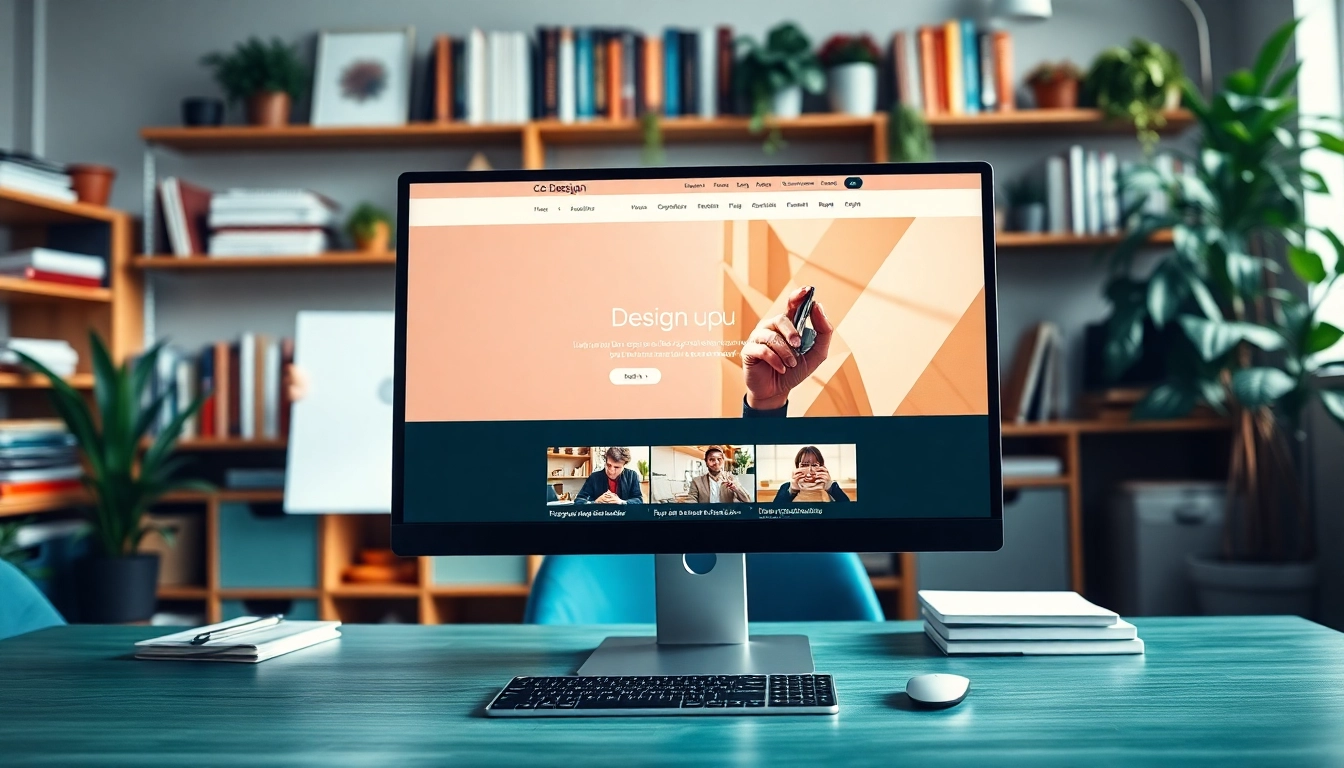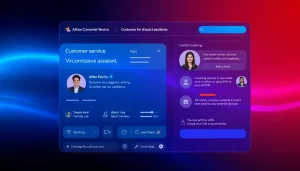Effective Strategies for Exceptional Website Design
Understanding the Basics of Website Design
Website design is a multifaceted discipline that encompasses various skills and practices in the creation and maintenance of websites. As technology has evolved, the role of website design has expanded, moving from mere aesthetics to a critical function that influences user experience and engagement. Today, the importance of a well-crafted website design cannot be overstated. Website design encompasses everything from web graphic design and user interface design to authoring—including standardised code and proprietary software applications. In this article, we delve into the essential components of website design, explore its importance, and share current trends that can influence the success of digital projects.
Key Components of a Successful Website Design
Creating a successful website requires a harmonious blend of visual elements, functionality, and user experience. Here are the key components that contribute to effective website design:
- Layout: The layout refers to how content is arranged on the page. A cohesive layout should guide users naturally from one section to the next, ensuring a logical flow of information.
- Color Scheme: Colors should be chosen carefully as they evoke emotions and influence user behavior. A well-planned color palette enhances brand identity and promotes usability.
- Typography: The selection of fonts should be legible and reflective of the brand’s personality. Consistent typography improves readability and strengthens the overall design.
- Images and Graphics: High-quality images and graphics can enhance visuals and attract attention. They should be optimized for web use to maintain loading speeds.
- Navigation: A straightforward and intuitive navigation system helps users find what they are looking for quickly, reducing bounce rates and improving overall satisfaction.
Importance of User Experience in Website Design
User experience (UX) is at the forefront of effective website design. It involves understanding the needs and desires of the user and designing accordingly. The significance of UX in website design can be summarized as follows:
- Improved Engagement: A focus on user experience leads to increased engagement, as users are more likely to spend time on a site that meets their needs effectively.
- Increased Conversion Rates: A user-friendly design can dramatically improve conversion rates. When users find it easy to navigate and interact with a website, they are more likely to make purchases or complete forms.
- Reduces Bounce Rates: Websites that are challenging to navigate often lead users to leave quickly. A strong UX can keep users on the site longer, potentially leading to further engagement.
- Brand Loyalty: Positive user experiences contribute to customer satisfaction and loyalty. Users tend to return to websites where they have had a pleasant experience.
Trends in Modern Website Design
As technology and user preferences evolve, so do design trends. Staying on top of the latest trends can give your website a competitive edge. Here are some current trends in website design:
- Minimalism: Less is often more in modern web design. Minimalistic designs, focusing on essential elements, enhance user experience by reducing distractions.
- Dark Mode: With the rise of dark mode in applications and operating systems, many websites are adopting dark themes to improve user comfort.
- Micro-Interactions: Subtle animations and interactions can guide users seamlessly through the website, making for a more engaging experience.
- Responsive Design: With an increasing number of users accessing websites via mobile devices, responsive design has become crucial for ensuring accessibility across different screen sizes.
- Asymmetrical Layouts: Breaking from traditional grid-based layouts, asymmetrical designs can create a visually appealing experience that captures users’ attention.
Essential Tools and Resources for Website Design
Equipping yourself with the right tools and resources is vital for creating a successful website design. The landscape is rich with software options and resources that cater to different aspects of design.
Top Software for Website Design
Different software applications cater to various stages of the design process. Here are some of the top software options:
- Adobe XD: A powerful tool for designing user interfaces and experiences, allowing designers to create interactive prototypes.
- Sketch: Primarily used for designing web and mobile user interfaces, Sketch offers great flexibility and integrates seamlessly with other tools.
- Figma: A web-based design tool that enables real-time collaboration among teams, Figma is perfect for collaborative projects.
- Canva: While often associated with graphic design, Canva provides simple web design templates ideal for quick and efficient designs.
- Webflow: A design tool that allows for visual design and development without needing the coding skills typically required for building websites.
Utilizing Templates for Quick Website Design
Templates can significantly speed up the design process. They provide a structured framework that can be customized, making them invaluable for both novice and experienced designers. Here are some advantages of using templates:
- Time Efficiency: Templates save time by providing a base layout and structure, allowing you to focus on customization and content.
- Cost-Effective: Many templates are available for free or at a low cost, making them an economical choice for startups and small businesses.
- Professional Layout: Templates are often created by professional designers, ensuring that the layout adheres to design best practices and trends.
- Easy Customization: Most templates allow for easy customization, enabling you to tailor them to your brand’s identity.
Resources for Design Inspiration and Learning
Inspiration and continuous learning are critical for any designer. Below are valuable resources that can help you grow and evolve in your website design skills:
- Behance: A platform where designers showcase their work and share projects, providing inspiration from a global community.
- Dribbble: A vibrant community of designers sharing screenshots of their work, making it a rich source for design inspiration.
- Online Courses: Websites like Coursera, Udemy, and Skillshare offer classes on specific design techniques, UX principles, and software usage.
- Design Blogs: Websites dedicated to design discussion, trends, and tips can help keep you updated on industry trends.
- Webinars and Workshops: Participating in live events can provide insights directly from professionals and an opportunity to engage with others in the field.
Best Practices for Website Design
Implementing best practices in website design is essential for achieving high-quality results. These practices encompass everything from usability adjustments to accessibility improvements.
Creating a User-Friendly Interface
A user-friendly interface is critical for ensuring that visitors can navigate your website with ease. Here are some strategies for creating an intuitive user interface:
- Consistent Layout: Keep a consistent design layout throughout the site, including navigation, fonts, and colors, to reduce confusion.
- Clear Call-to-Action Buttons: Make buttons easily identifiable and ensure they stand out to guide users toward desired actions.
- Effective Hierarchy: Use size, typography, and color to establish visual hierarchy, making it easy for users to scan and find information quickly.
- Search Feature: Including a search bar can help users find specific content or products, enhancing their experience.
Responsive Website Design Techniques
With the increase in users browsing on mobile devices, responsive design is a necessity. Here are some techniques to ensure your website is responsive:
- Flexible Grids: Use fluid grids that adjust to the screen size instead of fixed-width layouts, ensuring content is displayed effectively on any device.
- Media Queries: Employ CSS media queries to apply different styles for different devices, enhancing user experience based on their screen size.
- Responsive Images: Optimize images to adapt to different resolutions and sizes to maintain quality and speed across devices.
- Viewport Configuration: Set the viewport meta tag to ensure proper scaling of web pages on mobile devices.
Accessibility in Website Design
Accessibility should be a priority in website design. Making sites accessible to all users, including those with disabilities, improves overall usability. Here are some best practices:
- Alt Text for Images: Use descriptive alternative text for images to provide context for users with visual impairments.
- Keyboard Navigation: Ensure that all functionalities are accessible via keyboard navigation for users who cannot use a mouse.
- Color Contrast: Maintain sufficient contrast between text and background colors to aid users with visual impairments.
- Semantic HTML: Use semantic elements to structure content meaningfully, which benefits screen readers.
Common Challenges in Website Design
Despite careful planning and execution, many challenges can arise in website design. Recognizing and addressing these challenges is critical to creating a successful website.
Navigating Design Limitations and Constraints
Design constraints can result from various factors, including budget, technology, or specific client needs. Here are some strategies to navigate these limitations:
- Prioritize Features: Focus on essential features that align with user needs and business goals, ensuring the most critical elements receive attention.
- Use Modular Design: Implement a modular design approach that allows for easy adjustments without overhauling the entire site.
- Clear Communication: Maintain open lines of communication with stakeholders to ensure everyone’s needs are understood and considered in the design process.
- Iterative Design: Use iterative design practices where feedback is regularly gathered and used to improve the design, allowing flexibility despite constraints.
Balancing Aesthetics and Functionality in Website Design
One of the key challenges in website design is striking the right balance between aesthetics and functionality. Here’s how to achieve this:
- User-Centric Design: Always center the design around user needs, ensuring functionality does not get sacrificed for visual appeal.
- Test Designs: Conduct user testing to gather feedback on both the functionality and visual appeal, ensuring harmony between the two.
- Guided Aesthetics: Use visuals to enhance user navigation rather than distract, employing design elements that lead users toward key actions.
- Contextual Relevance: Ensure that aesthetic choices are fitting for the brand and the audience, avoiding disjointed designs that can confuse users.
Dealing with Client Feedback and Revisions
Receiving feedback from clients can inject challenges into the design process, often leading to multiple revisions. Here are strategies to manage feedback effectively:
- Define Expectations: Set clear expectations right from the start regarding the number of revisions included in the project to minimize scope creep.
- Structured Feedback Process: Implement a structured feedback process where clients provide feedback in batches rather than piecemeal, which can overwhelm and disrupt the creative process.
- Educate Clients: Keep clients informed about design principles and rationale, allowing them to make informed decisions and suggestions that enhance rather than detract.
- Feedback Sessions: Schedule feedback sessions to discuss revisions and adjustments together rather than relying solely on written communication, facilitating a shared understanding.
Measuring Success in Website Design
The effectiveness of website design is evidenced by its performance and user engagement. Understanding how to measure success is key to continuous improvement.
Performance Metrics and Analytics for Website Design
Measuring the success of a website involves tracking various performance metrics. Here are essential metrics to monitor:
- Traffic Sources: Understanding where your traffic is coming from assists in assessing the effectiveness of different marketing channels.
- Bounce Rate: A high bounce rate may indicate that visitors are leaving your site without engaging, signaling potential issues with design or content.
- Average Session Duration: The time users spend on your site can provide insights into engagement levels and content effectiveness.
- Conversion Rate: Tracking the percentage of visitors who complete desired actions can directly inform about design efficacy regarding functionality.
User Testing and Feedback for Website Design Improvement
Gathering user feedback is invaluable for refining website design. Focus on the following practices:
- Usability Testing: Conduct usability tests to observe how real users interact with your website, gaining insights into potential barriers and points of frustration.
- Surveys and Polls: Utilize surveys to gather direct feedback from users about their experiences and satisfaction levels.
- Feedback Tools: Implement feedback tools on the website that allow users to share their experiences seamlessly and provide suggestions for improvement.
- User Analytics: Analyze user navigation patterns to identify any troublesome paths or bottleneck areas needing attention.
Iterating and Evolving Your Website Design
Website design should never be static. Continuous iteration and evolution are essential for staying relevant. Consider the following approaches:
- Regular Audits: Schedule regular website audits to assess performance and usability metrics, identifying areas for potential enhancement.
- Stay Informed: Keep up-to-date with industry trends and emerging technologies that can influence and improve your website design.
- Implement A/B Testing: Use A/B testing to compare different design options, allowing data-driven decisions to reveal the most effective layouts and features.
- Solicit Continuous Feedback: Establish an ongoing feedback loop with users to ensure design adjustments align with user needs and expectations.














Post Comment